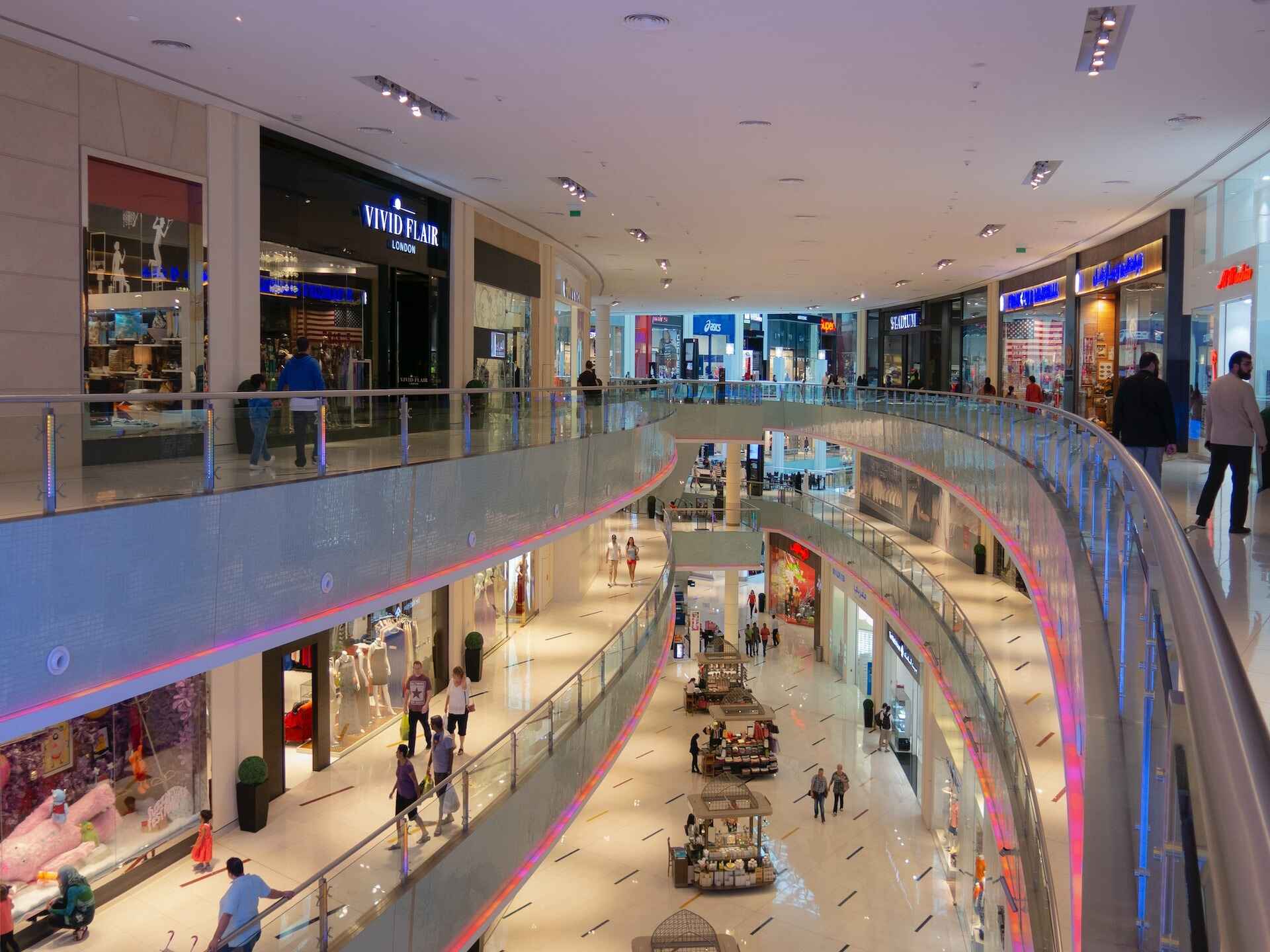In the history of retail business, shopping malls have long been regarded as holy places of commerce and social interaction community. Over time, Shopping malls have transformed from simple marketplaces to eye captive centres filled with a bunch of brands and shopping options. However, In recent years we’ve seen a significant shift in the retail landscape. Due to the introduction of the rise of e-commerce and the impact of the COVID-19 pandemic, the growing popularity of online shopping and the ensuing restrictions on public spaces have compelled retailers to re-evaluate their strategies and adapt to the changing environment.
In 2023, it is clearly visible with the naked eye that the future of shopping malls depends upon their ability to evolve and remain relevant in a world increasingly dominated by digital commerce. To outrank the growing e-commerce, the traditional model of retail focusing primarily on transactional exchanges must give way to a more innovative and experience-driven approach. This necessitates the integration of cutting-edge technology, such as augmented reality and smart fitting rooms, to provide shoppers with a seamless and engaging experience that goes beyond mere product acquisition.
Moreover, shopping malls like pacific mall dehradun must adapt to shifting consumer preferences, placing greater emphasis on sustainability, eco-friendly practices, and the incorporation of local and artisanal products. This transformation also extends to the physical spaces themselves, with a growing trend towards mixed-use developments and flexible leasing arrangements to accommodate the needs of both retailers and consumers.
In essence, the future of shopping malls in 2023 relies on their ability to strike a balance between the convenience of online shopping and the experiential allure of in-person retail therapy. By embracing change and fostering innovation, shopping malls can ensure their continued relevance and success in an increasingly competitive market.
1. Integration of Technology with Shopping Malls
The integration of technology will play a pivotal role in shaping the future of shopping malls, ensuring that they remain competitive and appealing to discerning consumers. Embracing cutting-edge advancements will not only enhance the overall shopping experience but also serve as a catalyst for innovation and growth within the dying retail sector.
The incorporation of augmented reality (AR) and virtual reality (VR) experiences is one significant development in this space. These immersive technologies enable consumers to visualize products in real-world settings, try on clothes virtually, try on eye lenses virtually, try on face cream virtually, and explore store layouts from the comfort of their homes. By bridging the gap between digital and physical retail, AR and VR solutions offer consumers a seamless and engaging experience that extends beyond the confines of traditional shopping environments.
Another essential aspect of technology integration is the implementation of smart fitting rooms and personalised recommendations. Equipped with interactive mirrors and digital displays, smart fitting rooms allow shoppers to view different styles, sizes, and colours without the need for physical trials. Furthermore, the use of artificial intelligence and machine learning algorithms can provide tailored product suggestions based on individual preferences and browsing history, ensuring a customised and streamlined shopping experience.
Lastly, the adoption of mobile apps and contactless payment systems is crucial in enhancing convenience and security for shoppers. With the ubiquity of smartphones, malls can utilise dedicated apps to offer features such as wayfinding, exclusive deals, and loyalty programmes. Additionally, the widespread acceptance of contactless payment methods, such as digital wallets and tap-to-pay cards, simplifies transactions and reduces the need for cash handling, fostering a safer and more efficient shopping environment.
2. Emphasis on Experiences
In today’s competitive retail landscape, shopping malls are placing a greater emphasis on experiences to attract and retain visitors. By focusing on entertainment, leisure, and social interaction, malls can offer an engaging environment that goes beyond traditional shopping. Experiential retail and immersive shopping environments are becoming more prevalent, with innovative retailers introducing interactive showrooms, unique store layouts, and immersive displays to captivate customers and foster brand loyalty.
Nowadays, shopping malls are transforming into cultural hubs, introducing art exhibitions, cultural performances, and community events into their spaces. These events not only benefit the visitor experience but also encourage visitors to come back again within the mall. With the integration of art, culture, and entertainment, malls can create a vibrant and dynamic atmosphere that caters to a diverse range of interests and preferences that might suit their shoppers.

For a better future for Shopping malls, it’s important to see what kind of environment they’re providing to their customers. A good environment helps them stand out in a saturated market and adapt to changing consumer expectations. By introducing a rich array of entertainment, leisure, and cultural activities, malls can improve the shopping experience and remain relevant in an ever-evolving retail landscape.
3. Sustainability and Eco-Friendly Practices
Those days are already gone when consumers were just limited to shopping. Now the consumers have become more conscious of environmental issues. That’s why shopping malls should shift their focus towards sustainability and eco-friendly practices to meet these changing demands. Green building design and energy-efficient technologies are being implemented in malls to reduce their carbon footprint and minimize energy consumption. This includes the use of renewable energy sources, energy-efficient lighting systems, and sustainable building materials.
Waste reduction and recycling initiatives are also gaining prominence in shopping malls, as they aim to minimize waste generation and promote responsible consumption. Retailers are encouraged to adopt sustainable packaging solutions while recycling facilities are provided for visitors to dispose of waste responsibly.
In addition, malls are promoting sustainable and ethically-sourced products to cater to environmentally-conscious consumers. Retailers are increasingly offering eco-friendly alternatives and embracing transparent, ethical supply chains to ensure that their products are produced responsibly and sustainably.
4. Re-invention of Retail Spaces
The future of shopping malls involves a significant reinvention of retail spaces to adapt to evolving consumer preferences and market trends. One such transformation is the rise of mixed-use developments and co-working spaces. By incorporating residential, office, and leisure spaces within their premises, malls can create a diverse, vibrant environment that caters to various needs and fosters a sense of community.
Pop-up shops and flexible leasing arrangements are also becoming increasingly popular, allowing for greater diversity and adaptability in the retail landscape. These temporary retail spaces provide opportunities for emerging brands, local businesses, and online retailers to test new concepts and reach a wider audience. Simultaneously, they offer variety and novelty for mall visitors, keeping the shopping experience fresh and engaging.
Conclusion
In conclusion, the future of shopping malls lies in their ability to adapt and innovate to meet the ever-evolving needs and preferences of consumers. By embracing cutting-edge technologies, focusing on immersive and engaging experiences, promoting sustainability and eco-friendly practices, and reinventing retail spaces, malls can stay relevant and thrive in an increasingly competitive market.



































